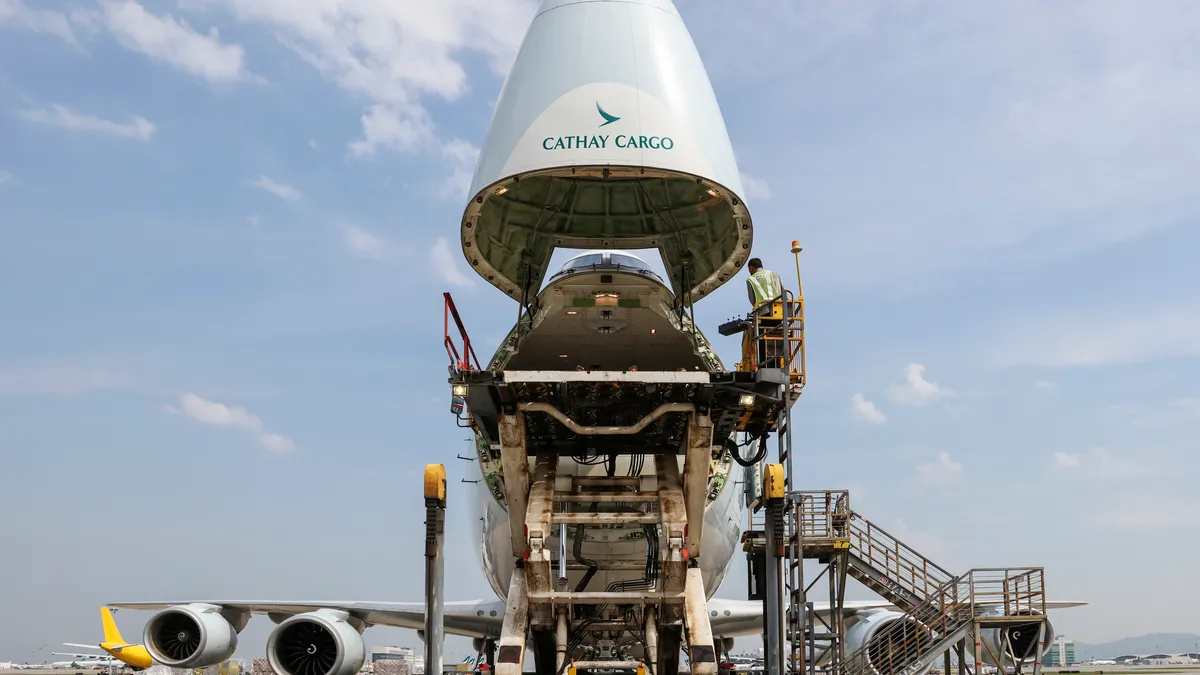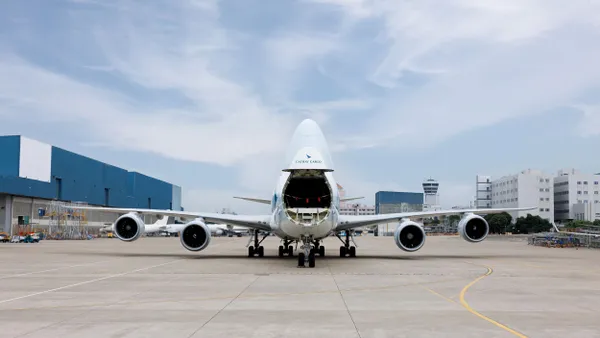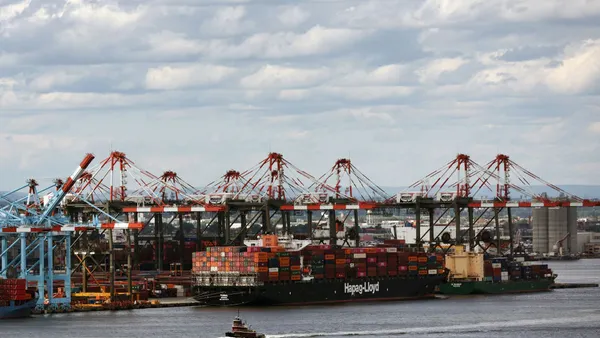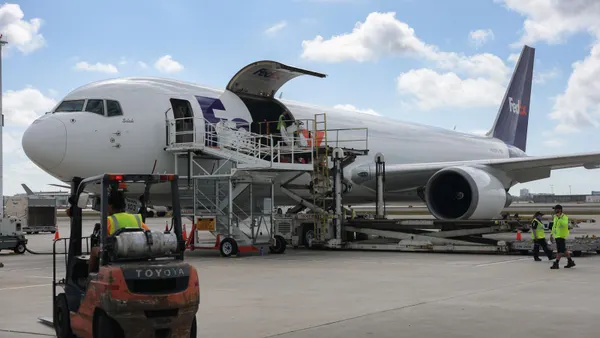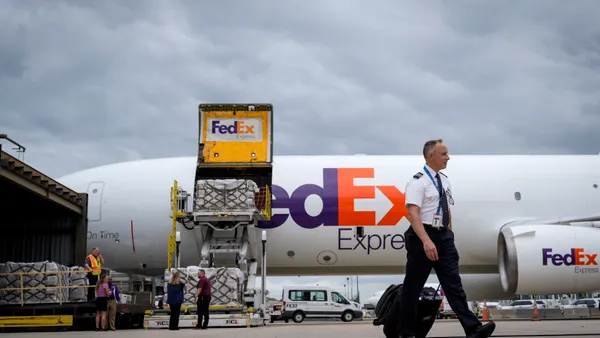Dive Brief:
- The elimination of the de minimis exemption for shipments from China and Hong Kong to the U.S. is expected to spark major turbulence for e-commerce volumes and the overall air cargo industry, according to a May 2 Xeneta report.
- A decline in demand due to the change, which went into effect Friday, would complicate carriers’ capacity planning. Xeneta reported there are already indicators of freighter flight cancellations and capacity redirection to other trade lanes.
- “The de minimis change in the US is going to disrupt the market and we’ll see its impact in the May numbers. I would say be prepared for a logistical mess,” said Niall van de Wouw, Xeneta’s chief airfreight officer.
Dive Insight:
Any efforts to reassess 2025’s air cargo market outlook would be “meaningless,” according to van de Wouw. April’s data didn’t help to gauge the state of the market, either, due to uncertainty at the start of the month, he added.
In January, Xeneta forecasted an up to 6% year-over-year increase in 2025 global air cargo demand. Since then, trade uncertainty has accelerated under the Trump administration amid tariff hikes and the anticipated end of the de minimis exemption, sending shock waves through supply chains and obscuring industry outlooks.
Tariffs prompt spot rates to surge
U.S. tariffs announced April 2, some of which have since been paused, spurred a rush of air cargo shipments from several countries in Asia to North America, Xeneta reported. The shipping surge prompted double-digit increases in spot rates and volume.
Spot rates from Southeast and Northeast Asia to North America saw an increase of 13% and 10% month over month, respectively, per Xeneta. Similarly, shippers rushing to export U.S. goods to China and Hong Kong prompted a rate surge on the North America to Northeast Asia trade lane, up 14% month over month.
However, the growth in rates halted following the Trump administration’s 90-day pause on many country-specific reciprocal tariffs, save for duties on China that have been increased multiple times.
Overall, April marked a second consecutive month of single-digit growth for overall global spot rates at 3% year over year, Xeneta reported. Economic and geopolitical volatility drove a 24% year-over-year drop in jet fuel rates in the first three weeks of April, which likely attributed to the slowing growth in spot rates.
Although lower spot rates would be positive news for shippers and forwarders, tariffs muddy the macroeconomic picture and overall air cargo demand, said van de Wouw.
“For most airfreight shipments, lower rates will not compensate for the tariffs that will have to be paid,” he added.
De minimis’ demise sows further uncertainty
Effective May 2, shipments from China and Hong Kong valued at $800 or less are subject to the U.S.’ 145% tariff rate for imports from China. For packages entering the U.S. via the international postal network, a flat fee of either 30% of their value or $25 per item will replace other applicable duties. FedEx and UPS have also reinstated China-to-U.S. surcharges to clear customs.
Currently, e-commerce accounts for half of shipments from China to the U.S. and 6% of global volume, per Xeneta. The volume of total U.S.-bound cross-border packages sits at roughly 1.35 billion annually.
“The traditional airfreight market will not be able to compensate for the decline in e-commerce volumes,” according to van de Wouw. “Airlines will adjust their networks to this new reality and this, in turn, will have a beneficial impact for shippers around the world as they will see more capacity coming (back) to their market – but they still need viable trading conditions to enjoy the benefit of this opportunity.”
However, although a slash in demand on key Transpacific trade lanes will have a “big impact,” so will the redistribution of global capacity.
“This is not about one industry being affected. This is about major trade lanes being affected, and we haven’t seen anything on this scale before,” van de Wouw said.



